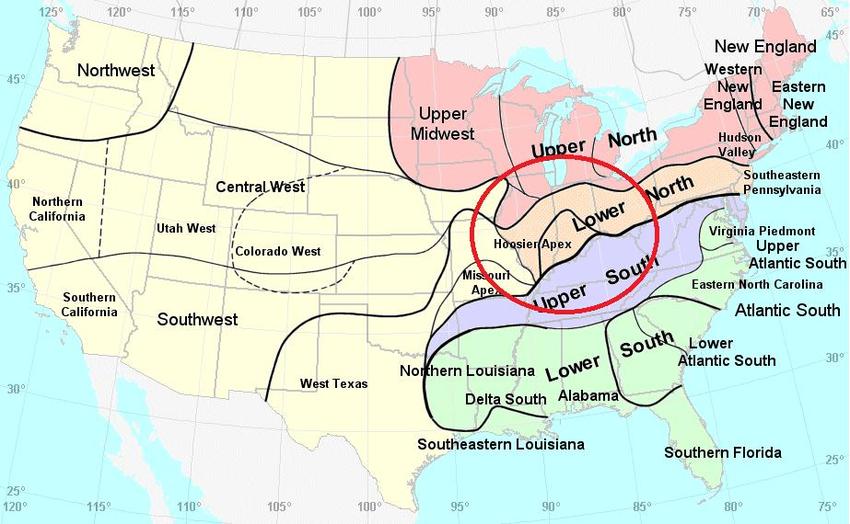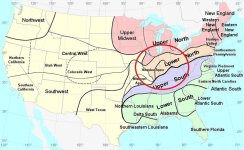Macrobius
Megaphoron

The Hoosier Apex
The Hoosier Apex (as seen in Figure in map above) is one that astonishes linguists. It is located in the southern/central west part of Indiana and a sliver of the south eastern part of...
theamericanmidlanddialect.weebly.com
Nice map and interesting names. Question for @Mike (or any other linguistically interested person here)... is GA moar like Upper North or Lower North or a blend?
Also I think the below map obscures the relation of eastern and western dialects, which do have variations but also connect more or less by latitude.

The Hoosier Apex (as seen in Figure in map above) is one that astonishes linguists. It is located in the southern/central west part of Indiana and a sliver of the south eastern part of Illinois and what it is is that it suddenly sounds like you just crossed into the state of Alabama. The Hoosier Apex is an example of the South Midland dialect; but it goes beyond that even to where it is almost just like a Southern dialect in itself. There have even been recent discussions about how there is even a Hoosier dialect in itself, taking on a Southern drawl and speaking slowly (Herring, 244). It also occurs to me that once when I was in class a peer student of mine had that when he visits other parts of Indiana they always want to know where it is he is from because he speaks a lot more southern than most anyone else in Indiana, and it just may be because he lives in this apex. I have also noticed that people from Indiana generally pick up a southern accent very easily. A phonological thing Herring points out that happens in the apex is that when someone says greasy the s turns into a z sound, like “greazy” (243).
Albert Mackwardt has been credited with coming up with the name Hoosier Apex. The name itself is not
anything of significance it is just a clever name, a lot like the word Hoosier. No one really knows how the word Hoosier came about. There have been stories. That I am sure most all Hoosiers have heard but who really knows if any of them are true and if they are which one. Craig M. Carver says that he believes that the Hoosier Apex may be from the early migration of Southerners and they may
have moved over the Ohio River north into Indiana more than they did other northern states (Herring 244). In the beginning when the migration took place Herring said that the most of them would not have called themselves or thought of themselves as “Midwesterners”, especially since that term was not around until later, but they also did not see themselves as Southerners either (246).
- 30 -
See also:

Midland American English - Wikipedia
About Cincinnati:
Older English speakers of Cincinnati, Ohio, have a phonological pattern quite distinct from the surrounding area (Boberg and Strassel 2000), while younger speakers now align to the general Midland accent. The older Cincinnati short-a system is unique in the Midland. While there is no evidence for a phonemic split, the phonetic conditioning of short-a in conservative Cincinnati speech is similar to and originates from that of New York City, with the raising environments including nasals (m, n, ŋ), voiceless fricatives (f, unvoiced th, sh, s), and voiced stops (b, d, g). Weaker forms of this pattern are shown by speakers from nearby Dayton and Springfield. Boberg and Strassel (2000) reported that Cincinnati's traditional short-a system was giving way among younger speakers to a nasal system similar to those found elsewhere in the Midland and the West.
The discussion of Charleston, SC is interesting as well.
Last edited:
